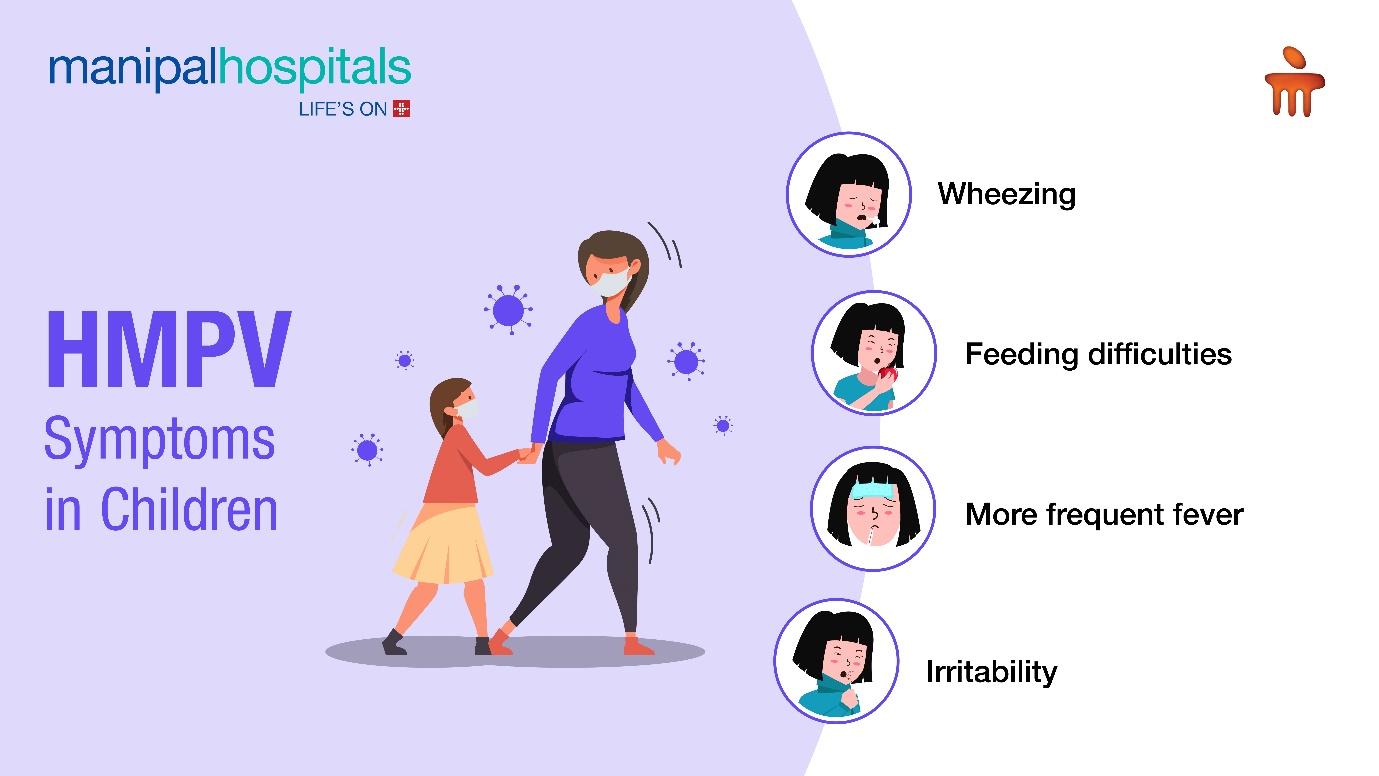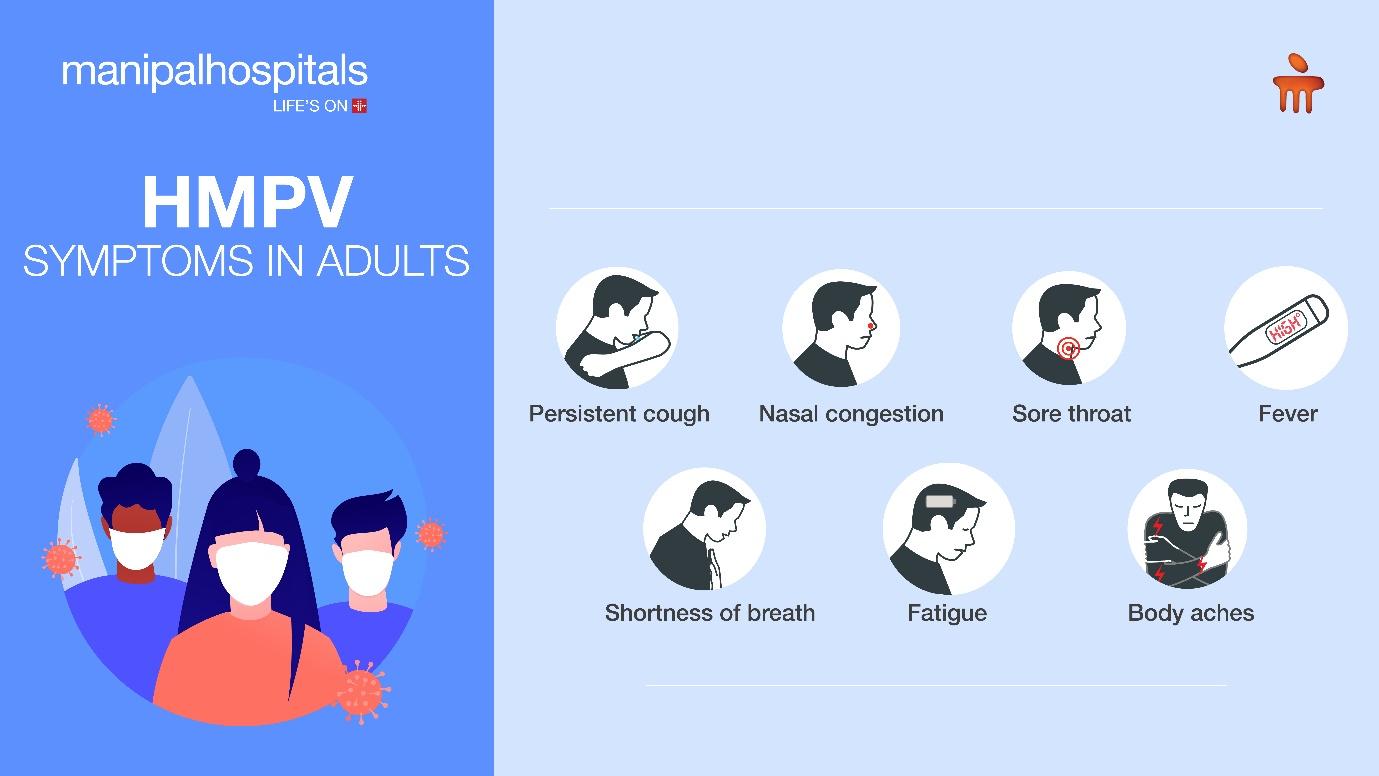
Listen to article
Loading audio...
Human Metapneumovirus (HMPV) is a respiratory virus increasingly contributing to global health concerns. MHPV primarily affects vulnerable groups such as young children, elderly adults, and individuals with weakened immune systems.
Recent data have shown rising cases of Human Metapneumovirus globally, including significant outbreaks in China, Malaysia, and Hong Kong and seven cases so far in India as of January 7, 2025. Originally discovered in 2001, this virus has become increasingly relevant in public health discussions, particularly because of its similarities with COVID-19.
This highlights the importance of understanding and managing the risks associated with HMPV infection.
Synopsis
What is Human Metapneumovirus (HMPV)?
Human Metapneumovirus belongs to the Pneumoviridae family. It is closely related to the Respiratory Syncytial Virus (RSV). HMPV is a contagious virus that infects the respiratory tract. This RNA virus was first identified by researchers in the Netherlands in 2001, though evidence suggests it had been circulating in human populations for at least 50 years before its discovery. This makes the virus a relatively recent addition to the list of known respiratory pathogens.
MHPV primarily causes upper respiratory tract infections, like the common cold but can also lead to lower respiratory tract infections, such as bronchitis or pneumonia, particularly in vulnerable populations.
Who can Get HMPV?
HMPV affects people of all ages, but certain groups are more susceptible to severe illness.
-
Those are- young children under 5 years old, especially infants.
-
Older adults aged 65 and above.
-
People with underlying health conditions, such as asthma, COPD or heart disease.
-
Individuals with weakened immune systems due to chronic illnesses or treatment, (e.g., cancer patients)
More Reads: Causes And Symptoms Of Cold And Chronic Allergies
How does HMPV work in the body?
Once the virus enters the body, it targets the respiratory system, infecting cells lining the airways. The virus spreads via respiratory droplets when an infected person coughs or sneezes or through contact with contaminated surfaces.
Key characteristics of HMPV
-
It is an RNA virus with a single-stranded genome encased in a lipid envelope, making it vulnerable to disinfectants.
-
The virus can survive briefly on surfaces, posing a risk of indirect transmission.
-
Seasonal in nature, HMPV infections are most common in late winter and early spring, similar to other respiratory viruses.
More Reads: 6 Things You Need To Know About The Flu Season

How is HMPV Spread?
HMPV infection is highly contagious and transmission primarily occurs through:
-
Close contact with infected individuals
-
Respiratory droplets from coughs and sneezes
-
Touching contaminated surfaces followed by face-touching
The virus shows distinct seasonal patterns. It tends to peak activity typically occurring during late winter and early spring in temperate climates. High-risk groups that can develop human pneumovirus infection include:
-
Children under 5 years old
-
Adults over 65 years
-
People with compromised immune systems
-
Individuals with underlying respiratory conditions
More Read: Infectious Diseases: Causes, Types & Ways to Prevent Them
What are the Risk Factors Associated with HMPV?
Anyone can get the HMPV virus. However, children who are under 5, old and people with weak immunity due to medical conditions or treatment are at a higher risk for severe illness.
Complications include:
-
Pneumonia
-
Bronchiolitis (inflammation of small airways in the lungs)
-
Severe respiratory distress requiring hospitalization
-
Secondary bacterial infections, like ear or sinus infections
Symptoms of HMPV

Symptoms of HMPV typically develop 3-6 days after exposure and can range from mild to severe:
Common HMPV symptoms in adults are:
-
Persistent cough
-
Nasal congestion or runny nose
-
Fever
-
Body aches
-
Fatigue
In children, additional HMPV virus symptoms may include:
-
Wheezing
-
Feeding difficulties
-
Irritability
-
More frequent fever
Severe cases may develop into HMPV pneumonia, characterised by:
-
High fever
-
Severe respiratory distress
-
Rapid breathing
-
Bluish tint to lips or skin
More Reads: 6 Symptoms Of Flu And Its Treatment
Treatment for HMPV
There are no specific antiviral treatments for HMPV yet. Current HMPV treatment approaches focus on managing symptoms:
Supportive Care:
-
Rest and hydration
-
Over-the-counter fever reducers
-
Humidification
-
Nasal saline drops/sprays
Hospital Treatment (for severe cases):
-
Oxygen therapy
-
Respiratory support
-
Intensive monitoring
-
IV fluids
Research is ongoing for specific antiviral treatments, though none are currently approved specifically for HMPV.
Preventing HMPV Infection
Adopting preventive measures can significantly reduce the risk of HMPV infection. Some of the prevention strategies include:
Personal Hygiene
-
Regular hand washing with soap and water
-
Using alcohol-based hand sanitizers
-
Proper respiratory etiquette (covering coughs and sneezes)
Environmental Measures
-
Regular cleaning of frequently touched surfaces
-
Proper ventilation in indoor spaces
-
Avoiding close contact with infected individuals
While no vaccine is currently available, research is ongoing. Several pharmaceutical companies are in various stages of vaccine development for HMPV virus, with some promising results in early trials.
More Reads: Tips To Survive The Cold And Flu Season
HMPV vs. Other Respiratory Viruses
HMPV shares similarities with other respiratory viruses but also exhibits some key differences from other respiratory viruses:
HMPV vs. RSV
-
Generally milder symptoms than RSV
-
Similar seasonal patterns
-
Different age distribution of severe cases
HMPV vs. Influenza
-
Slower onset of symptoms
-
Less likely to cause severe body aches
-
Different response to antiviral medications
When to See a Doctor?
It’s important to seek medical attention if you or your loved ones experience any of the below problems:
-
Persistent high fever that does not respond to medication.
-
Severe difficulty in breathing or wheezing
-
Chest pain or rapid breathing
-
Signs of dehydration, such as reduced urination or dry mouth
-
Bluish tint to lips, skin or fingernails
Young children, elderly individuals and those with pre-existing medical conditions should not delay seeking medical care, as they are more prone to severe complications.
Conclusion
Human Metapneumovirus (HMPV) is an emerging threat to respiratory health. While most infections are mild, understanding their symptoms and prevention strategies is crucial for high-risk individuals, particularly for those at higher risk. Always consult healthcare professionals for proper diagnosis and treatment, especially if experiencing severe symptoms.
Staying informed about respiratory viruses like HMPV helps protect not only yourself but also vulnerable members of your community. Continue to practice good hygiene and stay updated on the latest health guidelines and recommendations.
FAQ's
HMPV is a respiratory virus that can cause upper and lower respiratory tract infections in people of all ages, though it's particularly significant in young children and elderly adults.
While most cases are mild, HMPV can cause severe illness in young children, elderly adults, and those with compromised immune systems or underlying health conditions
Testing is typically done through PCR testing of respiratory specimens, ordered by healthcare providers when HMPV infection is suspected.
Currently, no approved vaccines exist for HMPV, though research is ongoing with several candidates in development.
No, COVID-19 and HMPV are different viruses. COVID-19 is caused by the SARS-CoV-2 virus, while HMPV is a respiratory virus belonging to the Pneumoviridae family.
Human Metapneumovirus (HMPV) INFECTIONS TYPICALLY LAST 7 TO 14 days depending on the severity of the case and the individual’s overall health. Mild symptoms like a runny nose, cough, and fatigue usually resolve within a week. However, in high-risk groups such as young children, elderly adults, and immunocompromised individuals, symptoms may persist longer.
While most people recover fully from HMPV infections, severe cases—especially in children, elderly adults, or individuals with weakened immune systems may lead to complications such as chronic respiratory issues. To minimize risks, early medical attention is crucial for severe or worsening symptoms.
Home remedies can provide relief from mild HMPV symptoms and aid recovery. Here are some effective options:
-
Stay Hydrated
-
Humidify the Air
-
Rest
-
Saline Nasal Sprays
-
Warm Liquids
No, antibiotics do not treat HMPV infections because it is a viral illness, and antibiotics are only effective against bacterial infections.





















 7 Min Read
7 Min Read










